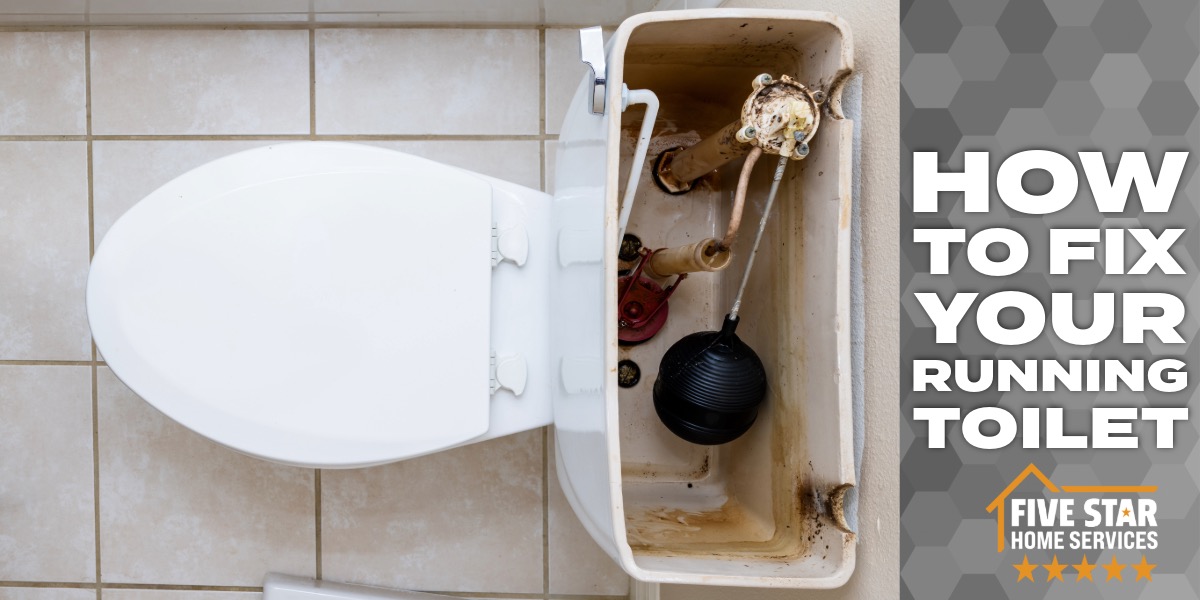A constantly running toilet is not just a source of frustration. It can also mean a significantly higher water bill if left uncorrected. For enthusiastic DIYers, homeowners who prefer hands-on solutions, plumbing novices looking to learn, or business owners maintaining their facilities, understanding how to tackle this common household issue can be empowering and economical.
In the following, your friendly local plumbing experts at Five Star Home Services will dive into the world of DIY toilet repair, where we will walk you through diagnosing the problem, the tools you’ll need, and a detailed, step-by-step solution that could restore the serenity of your bathroom — and potentially save you money.
Diagnosing the Problem
The first step in fixing a running toilet is to identify what’s causing the problem. Several issues could be at play, from a faulty flapper to an imbalanced float or a leaky seal. Listen closely: is the running water constant, or does it start and stop? The nature of the noise will lead you to the source of the problem.
Tools and Materials Needed
Before you begin, make sure you have:
- Adjustable wrench
- Rubber gloves
- Replacement flapper (if needed)
- Replacement fill valve (if needed)
- Towels for any spills
Step-by-Step Guide to Fixing a Running Toilet
- Shutting off the Water Supply – Locate the water valve behind the toilet and turn it clockwise to shut off. Flush the toilet to drain the tank.
- Inspecting and Adjusting the Flapper Valve – Remove the tank lid. The flapper is the rubber seal at the bottom of the tank. If it looks warped or damaged, it may need replacing. Otherwise, adjust the chain; it should have a bit of slack when the flapper is down.
- Checking and Adjusting the Fill Valve – The fill valve controls water flow into the tank. It should shut off when the water reaches about one inch below the top of the overflow tube. Adjust the float if the valve doesn’t stop the water at this level.
- Cleaning or Replacing the Flush Valve Seal – The flush valve seal is around the central post where water flows into the bowl. Over time, this can become dirty or wear out. Inspect and clean it, replacing it if necessary.
- Testing for Leaks and Making Final Adjustments – Turn the water back on and let the tank fill. Check for leaks and observe if the toilet runs. Fine-tune float and valve settings as required.
Preventative Maintenance Tips
- Don’t ignore a running toilet. Fixing issues promptly prevents wasted water.
- Perform regular inspections of your toilet’s internal mechanisms.
- Clean your toilet’s tank bi-annually to prevent buildup from affecting its functions.
- Consider upgrading to modern, water-efficient parts to prevent common issues.
Still Need Help? Call Your Friends at Five Star Home Services Today!
There you have it, step-by-step instructions for solving one of the most typical – and annoying – bathroom problems: a running toilet. By taking the time to understand and address the issue, you can often find a simple repair without needing a plumber.
Remember, regular maintenance and timely repairs are the keys to avoiding a running toilet and the expenses that come with it. Now roll up your sleeves, grab your tools, and give your toilet the attention it needs to keep your water bill down and your bathroom quiet.
➡️ Featured Blog: Why Isn’t My Toilet Flushing?
If you can’t fix your toilet independently, we also encourage you to call Five Star Home Services!
Call us today at (833) 405-8009!

